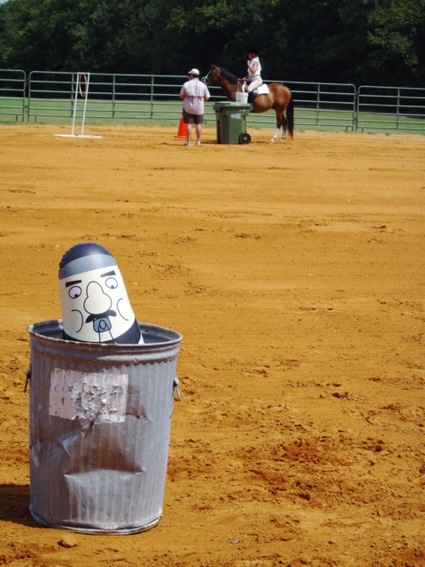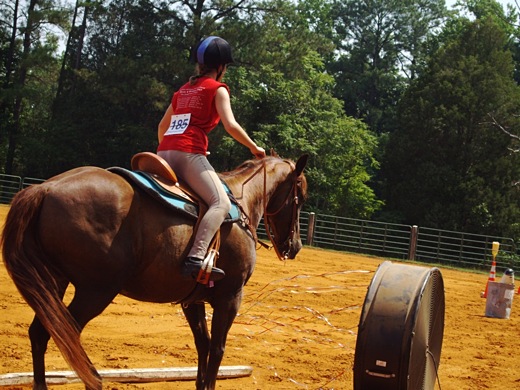Horsing around, police style
Perhaps you’ve seen them roaming the Fan, or perhaps patrolling at the most recent First Friday. These astounding animals are not only one of the planet’s most captivating creatures, there are also some of Richmond’s finest. We take a look at what a police horse (and their police rider) do in a typical day. Oh, and it can involve pulling cars over!
While a huge swath of Richmond was busy watermelon-ing it up in Carytown on Sunday, a few of Richmond’s finest were busy horsing around elsewhere. No, they weren’t just hanging out at the river. The Friends of the Richmond Mounted Squad (FRMS) held their Fun and Pleasure horse show at Dorey Park to benefit their squad, where (among other classes) riders could compete in an obstacle course against the Mounted Squad. The obstacle course consisted of various challenges Mounted Squad horse might meet, including a traffic barrier that had to be pulled, a suspicious inflatable character hiding in a trash can, a pile of bottles and trash, and bright shiny strings blowing in the wind (which turned out to be the biggest spooker of the animals).
Richmond’s Mounted Squad has been around in some form since 1894. As time has passed, RVA changed, and the mounted squad has changed with the city. So what is life like for the present-day Richmond Mounted Squad members when they aren’t competing in the ring? After watching the unit trot and canter around the ring and answer some equine-related knowledge questions from a judge (where is a horse’s croup?*), I chatted with Dawn and her dark bay partner, Beau, to see what it is like to be part of the mounted division. For example, does one have to be an experienced equestrian to be part of the squad? Is it an all-horses-all-the-time job, or do you have to do “regular” officer duties as well?
The answer to the first is no, in fact one does not have to be an experienced rider in order to try to be part of the mounted squad. “You do have to go through the Academy,” Dawn explained from atop Beau in one of the few shady spots after competing in the ring. “It’s good to be on the street for two years. Then you have to go through 240 –” (“240?” she checked with a colleague) — “280 hours of training.”
“You’re a police officer first,” says Dawn, “then the mounted unit.”
A typical day involves “Everything!” They use whistles and voice and hand commands just like other non-mounted officers that direct traffic, and they even do traffic stops.
“How do you do traffic stops from a horse?” I asked.
“Very carefully!” Dawn explained with a smile. They have radar guns, and she explained that it’s actually very similar to a regular traffic stop (aside from the horse, of course).
“Our craziest encounter would have to be the VCU riot [after the basketball game]. It was definitely the worst experience ever, being that we had bricks and bottles thrown at us. It did spook some of the horses.” She went on to say that “My partner is my horse. I ride every day. It takes a while to gain their trust.”
“Each horse has his personality. My horse isn’t a fan of big trucks and the sound they make…Being able to communicate what I want him to do and having him do it [is a challenge]. I was on the bike unit before which is totally different because I can control the bike.” When you’re on the mounted unit though, you’re working with your destrier, so it’s easy to see that it involves a different level of involvement from driving or biking.
“Every day is training,” said Dawn.
*The caboose; specifically, the “rump” area
-
Recommend this
on Facebook -

Report an error
-

Subscribe to our
Weekly Digest








There are 6 reader comments. Read them.